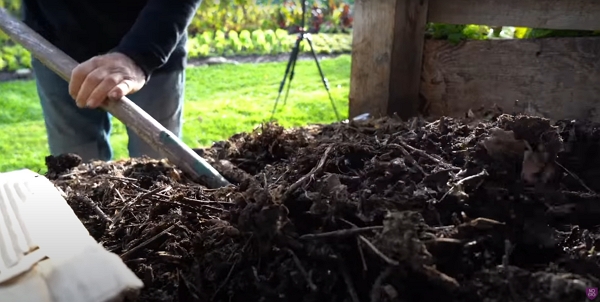Charles has come to an end with his compost comparaison. Let’s look at the results and the conclusion to draw from it.
Thanks to Charles Dowding for sharing his wisdom and knowledge! I wrote the following notes watching the video published on Charles Dowding’s channel. You can watch it using this YouTube link.
Trial setup
Charles has 12 pots of different mixes of compost with spinach and spring onions.

There are:
-
Pots 1 to 3: 3 pots of 9-month-old homemade compost sifted at 4 mm
- pot 1: the first pot is filled with 100% homemade compost
- pot 2: the second pot is filled with 25% of worm compost and 75% homemade compost
- pot 3: the third pot is filled with 20% worm compost, a little bit of seaweed and 80% of homemade compost
-
Pots 4 to 6: 3 pots of 2–3 years old woodchips compost of sifted at 4 mm
- pot 4: the first pot is filled with 100% woodchip compost
- pot 5: the second pot is filled with 30% of worm compost and 70% woodchip compost
- pot 6: the third pot is filled with 50% of worm compost and 50% woodchip compost
-
Pots 7 to 9: 3 pots of Moorland Gold compost
- pot 7: the first pot is filled with 100% Moorland Gold compost
- pot 8: the second pot is filled with 30% of woodchip compost and 70% Moorland Gold compost
- pot 9: the third pot is filled with 25% of worm compost and 75% Moorland Gold compost
-
Pots 10 to 11: 2 pots of mushroom compost
- pot 10: the first pot is filled with 100% mushroom compost
- pot 11: the second pot is filled with 25% of worm compost and 70% mushroom compost
-
Pot 12: 25% worm compost and 75% regular soil
-
Pot 13: 100% regular soil
Day 16 updates

First, the pots are relatively small for the plants growing; therefore, the nutrients might run low at some stage. It will be interesting to see how the plants will handle it.
Pots 13 and 12: pure soil with worm compost
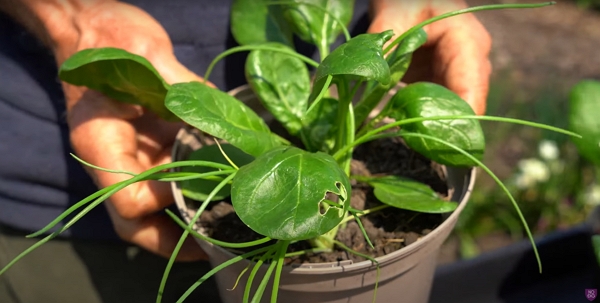
The spring onion is looking better in the pot 13 compared to the pot 12, even though the latter has 25% worm compost… Still, the spinach has a darker color in the pot 12.
Pots 4 to 6: woodchip compost and co
Surprisingly, pot 4 (100% woodchip compost) is doing well, even if, historically, the wood usually takes out more out of the plant. It even has the best-looking onions.
Pots 5 and 6 show a difference in the size of the spinach (larger in pot 6 and the largest so far).
Pots 10 and 11: mushroom compost

Apparently, the mushroom compost isn’t very successful.
Why? When the mushroom compost was very young, still hot and dry. Also, the compost is holding water much more than the rest, and the roots are probably being asphyxiated…
Pots 1 to 3: homemade compost and co
Again, the homemade compost, pure or with a mix of worm compost, the results are not as Charles expected.
Pots 7 to 9: Moorland Gold compost
It is doing pretty well, and actually it does better with less worm compost, probably because the Moorland Gold compost is already pretty rich.
The spinach is the darkest one in pots 7 and 9.
Day 30 updates
The progress is producing very interesting results:
-
In pot 7 (100% Moorland Gold compost), the spinach is getting yellow, which mean the nutrients are running low.
-
In pot 9 (25% of worm compost and 75% Moorland Gold compost), the onions are much bigger
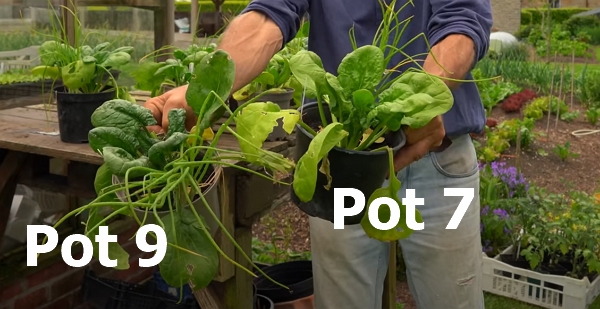
-
Pot 5 (30% of worm compost and 70% woodchip compost) even outperformed pot 7
-
Pot 12 (soil with worm compost) outperformed pot 13 (pure soil)
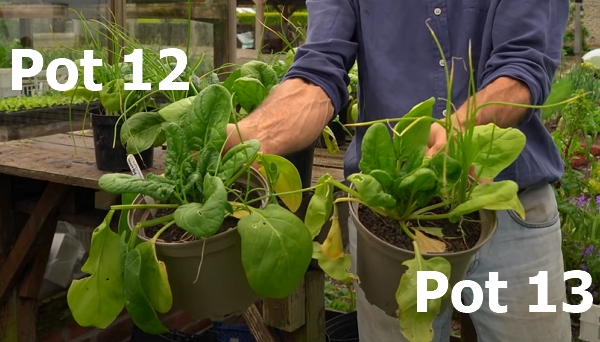
-
Comparing pot 4 (100% woodchip compost) to pot 6 (50% of worm compost and 50% woodchip compost), the former isn’t looking as brilliant as on day 16, with a spinach looking yellow while the onion is OK. However, we clearly see the benefits of added worm compost in pot 6.

-
Pot 5 and pot 6 are interesting to compare because, to me, it looks like 50% worm compost seems to produce a worse result than 30% worm compost
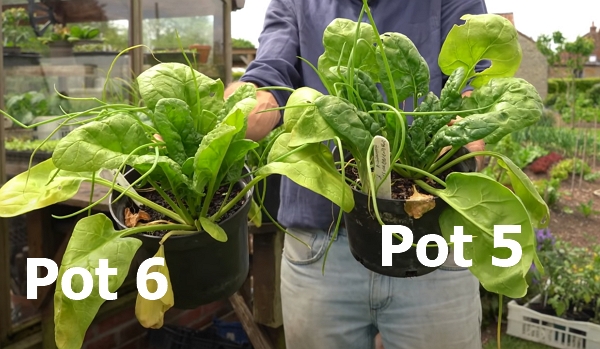
-
Pots 10 and 11 are giving a lesson: the plants will struggle at first, but they can come out well. Even, these pots are the best-looking spinach on day 40!
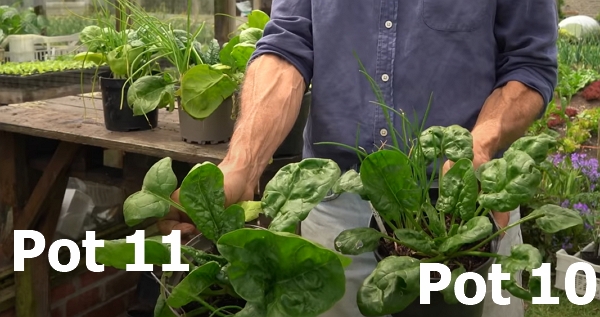
-
Pot 1 (100% homemade compost) is showing another lesson: homemade compost has again won with the best-looking spinach in size even if it didn’t start out well (the onion is showing the sequels…).
- Charles points out his homemade compost is not designed for potting, it doesn’t behave like the hare, but rather the tortoise :D
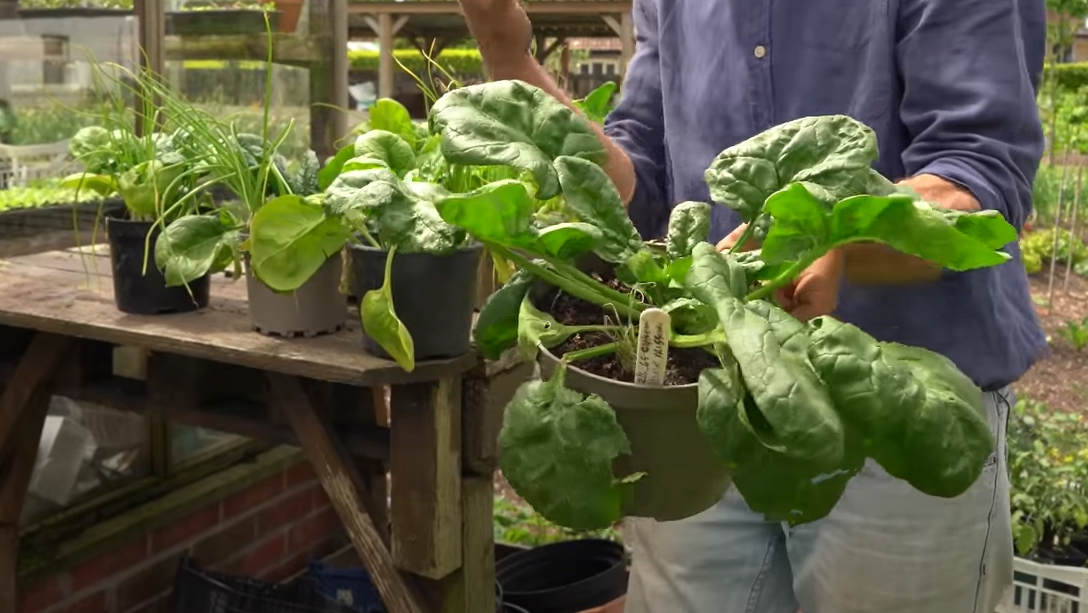
-
Comparing pot 1 to pot 3 (20% worm compost, a little of seaweed and 80%% homemade compost), we see the similar results. The onion looks better because it started much better in pot 3.
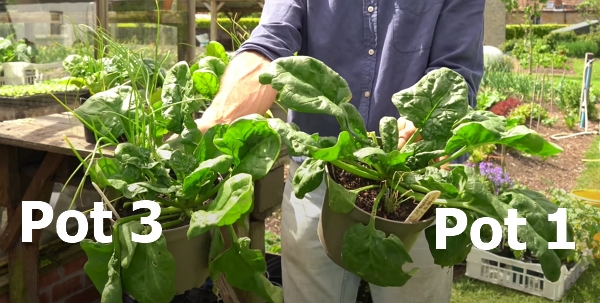
-
Comparing pot 1 to pot 2 (25% worm compost and 75% homemade compost), we see once more the benefits from worm compost.
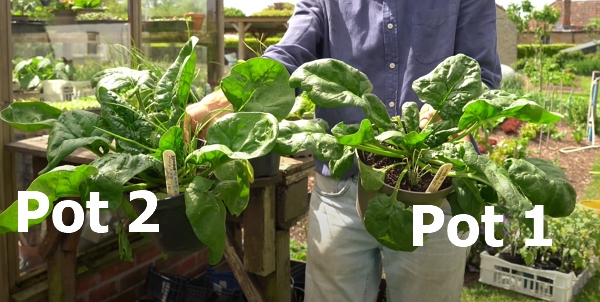
Looking at the roots
With soil
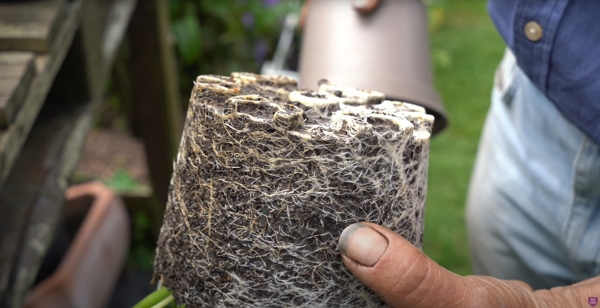
The root system of the soil pot is very good.
With woodchip compost
Woodchip alone is not enough, even if the pot 4 had roots. But pots 5 and 6 showed that having the nutrients of the worm compost made the plants healthier.
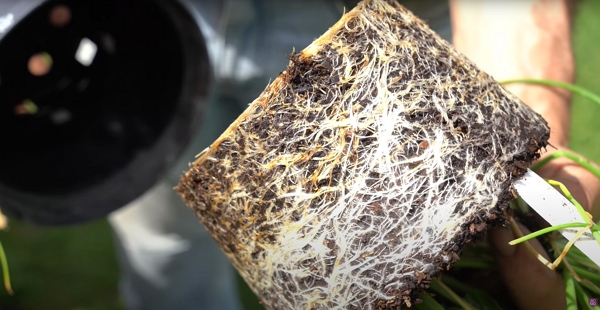
With worm compost
Limiting the worm compost is important, as we see that too much will hurt the roots.
See below pot 6:

Why? Because the drainage is not the best, so avoiding it at 100% (despite the price tag) is a good idea.
With Mushroom compost
The roots are pretty nice, even though at the start, the lack of good drainage slow down the growth.
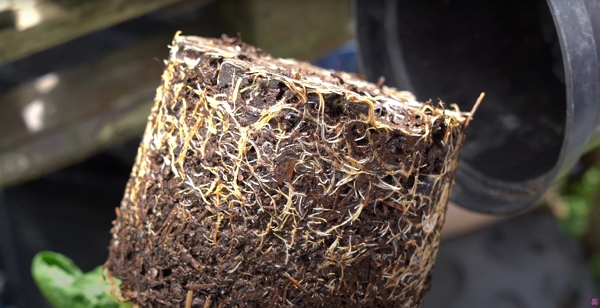
With homemade compost
The roots are the healthiest of all. It shows that the homemade compost brings a nice balance of nutrients and structure (with various sizes of particles, small and bigger).
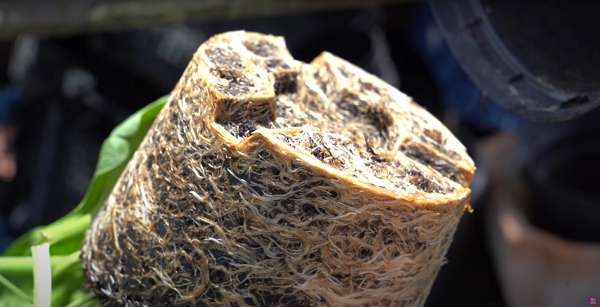
Conclusion
Worm compost, in about 20–25% proportion, can boost your plants and give great results. Higher
Mushroom compost is showing that it would be good for potting, but let it age first. I wish I could say I can buy £50 per ton delivered for it! :O
Moorland Gold potting compost clearly shows it is not made to be used as it was in the trial. The plants must be transplanted in the ground.
A balance of good drainage and sufficient nutrients is the goal in the end and a slight variation will affect the root system and the health of the plant.
General notes
Do we need to add anything for drainage in the mix to grow vegetables?
We are talking about vermiculite or feeds or amendments.
Charles rarely uses vermiculite: only for lettuce and basil.
When you are making seedlings, starting from a seed, it could make a difference. But at the stage of growth of the picture below, it won’t.
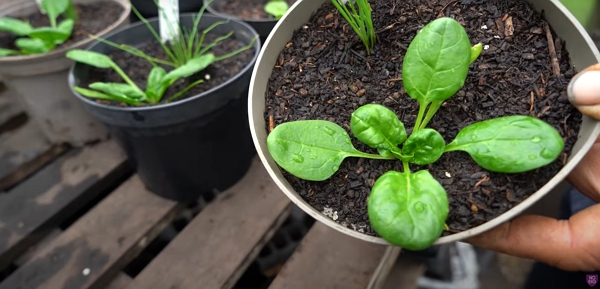
Also, when the plant is big enough, having more drainage with wash away the nutrients.
Compost is brilliant to retain nutrients.
